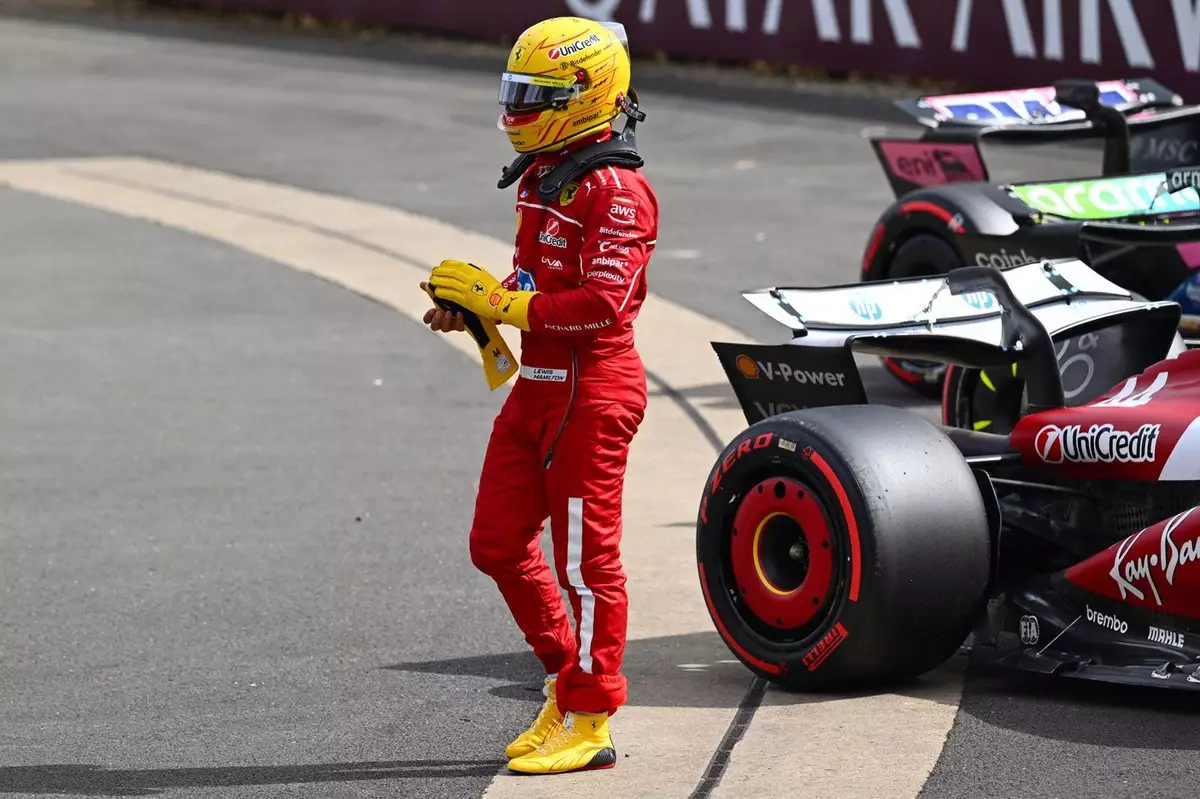Lewis Hamilton’s recent qualifying session at Silverstone underscores a familiar narrative: talent alone isn’t enough; precision, consistency, and a touch of luck often determine success in Formula 1. Despite evident progress and a notably improved feeling with his car, Hamilton’s inability to convert a near-perfect lap into pole position reveals the relentless challenge of competing at the highest echelon. This moment of near-miss exposes not just the technical intricacies of racing but also the psychological resilience required to face setbacks with unwavering determination.
Hamilton’s acknowledgment of making minor errors—specifically, the understeer in Turn 16—illustrates a candid self-awareness that is both inspiring and instructive. Rather than allowing frustration to mar his outlook, he sees this as part of the continuous development process. His openness about the mistake signals a mindset focused on learning rather than dwelling on failure. This attitude is a testament to his longevity in the sport, where mental toughness often trumps mere technical prowess.
Evolution and Adaptation: The Power of Growth
The shift from Mercedes to Ferrari marks a pivotal chapter in Hamilton’s career, one characterized by adaptation and a pursuit of fresh victories. His comments about the improving relationship with his engineers reveal a strategic effort to optimize every aspect of his performance. It is tempting to view these improvements as superficial wins; however, they are indicative of a deeper, more resilient drive—an acknowledgment that success is often rooted in cohesive teamwork and the relentless pursuit of excellence.
Interestingly, Hamilton credits recent upgrades and refined processes for his rising confidence, suggesting that the battle is not solely with rivals on the track but also within himself—constantly pushing beyond previous limits. His journey exemplifies a crucial lesson: evolution in high-stakes environments demands a mindset willing to embrace change and to see setbacks as stepping stones. Such resilience is vital, especially when internal cohesion and smooth communication become as essential as the car’s performance itself.
Chasing the Ghosts of Past Triumphs
While Hamilton fans hope for his tenth British Grand Prix victory, the reality of Formula 1 tells a different story. The dominance of Red Bulls and McLarens in recent sessions illustrates the increasingly competitive landscape. Yet, Hamilton’s optimistic outlook—arguing that “when there’s a will, there’s a way”—embodies a larger lesson about perseverance.
His admiration for the Ferrari culture and the support from fans and family demonstrates that motivation extends beyond mere points or trophies; it becomes a source of inner strength. The emotional connection to his home race, the legacy of his previous wins, and the pride in wearing the Ferrari red fuel his competitive fire. This emotional underpinning emphasizes that extraordinary achievement stems from a deep-seated passion and unwavering belief in oneself, even when circumstances seem unfavorable.
The Relentless Pursuit of Excellence
In a sport where milliseconds decide destiny, Hamilton’s narrative is a reminder that excellence is a moving target—not a static achievement. His acknowledgment of the gaps in performance and the explicit desire to keep pushing reflect an athlete who refuses complacency. The temptations to settle or accept mediocrity are countered by his innate hunger for greatness, sustained by years of trial, error, and triumph.
The fact that Hamilton remains fiercely committed, despite shifting teams and evolving technical challenges, indicates that true mastery encompasses mental resilience. It’s about constantly refining, adapting, and maintaining a belief that victory is always within reach—even when frustration is mounting. His candid reflections serve as a blueprint for anyone striving toward excellence: setbacks are merely setups for comebacks.
In the end, Hamilton’s story at Silverstone isn’t just about a missed pole position; it’s about the unbreakable human spirit that refuses to yield. By embracing imperfections, investing in continuous growth, and nurturing an indomitable resolve, he exemplifies the relentless pursuit of greatness—a lesson that extends far beyond the racetrack.

